
Bleeding Heart Plant, Lamprocapnos spectabilis - Plant
(MRP Inclusive of all taxes)
- Shipping ₹79 for entire order
- Dispatch in 7 days
- Country of origin: India

(MRP Inclusive of all taxes)
 Save 29%
Save 29%
Air Purifier Money Plant with Pot The Air Purifier Money Plant, also known as Pothos or Epipremnum aureum, is a stunning indoor plant that...
View full details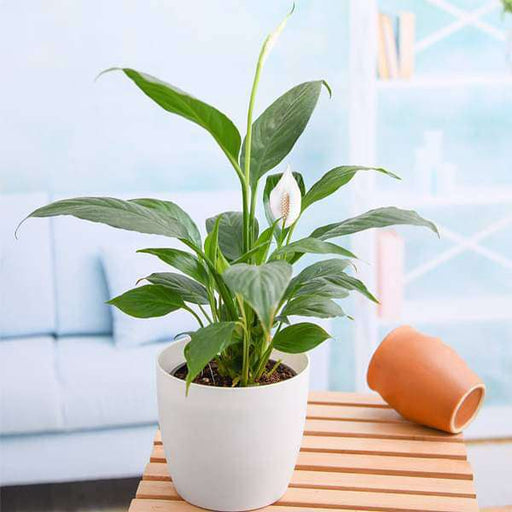
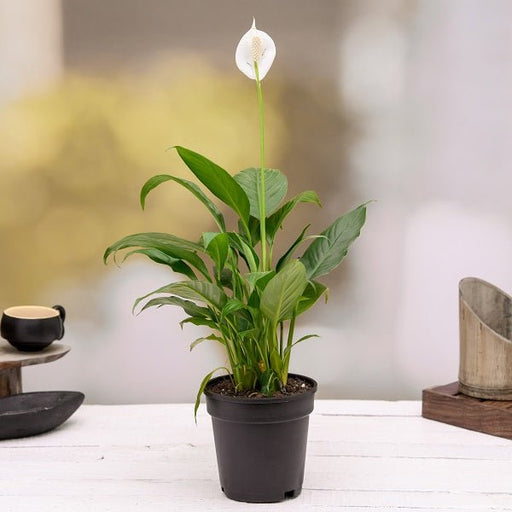 Save up to 15%
Save up to 15%
Peace Lily, Spathiphyllum - Plant The Peace Lily, scientifically known as Spathiphyllum, is a stunning houseplant celebrated for its elegant white...
View full details
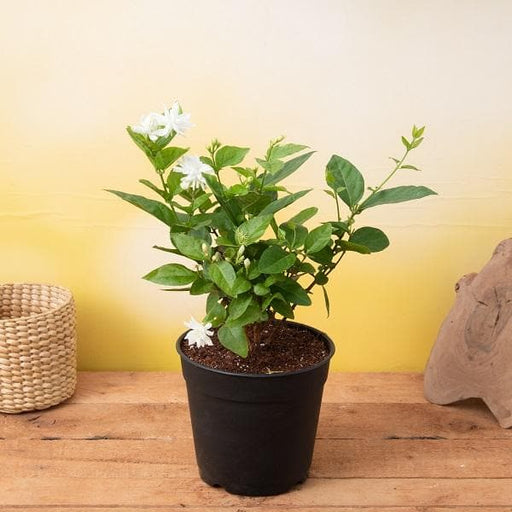 Save 25%
Save 25%
Jasminum sambac, Mogra, Arabian Jasmine - Plant Jasminum sambac, commonly known as Mogra or Arabian Jasmine, is a fragrant flowering plant...
View full details
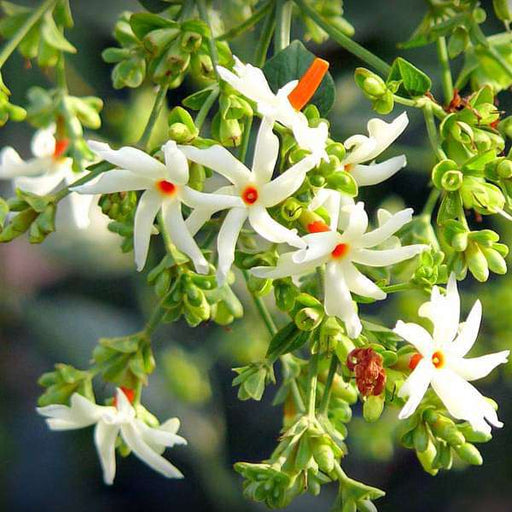 Save 18%
Save 18%
Combo Constituents Includes the Parijat Tree (Night-Flowering Jasmine), a culturally significant plant with fragrant flowers. Description The Pari...
View full details
 Save 25%
Save 25%
Miniature Rose, Button Rose (Any Color) - Plant The Miniature Rose, also known as the Button Rose, is a charming and compact flowering plant that ...
View full details Save 25%
Save 25%
Damascus Rose, Scented Rose (Any Color) - Plant The Damascus Rose, also known as Rosa damascena, is a timeless symbol of beauty and romanc...
View full details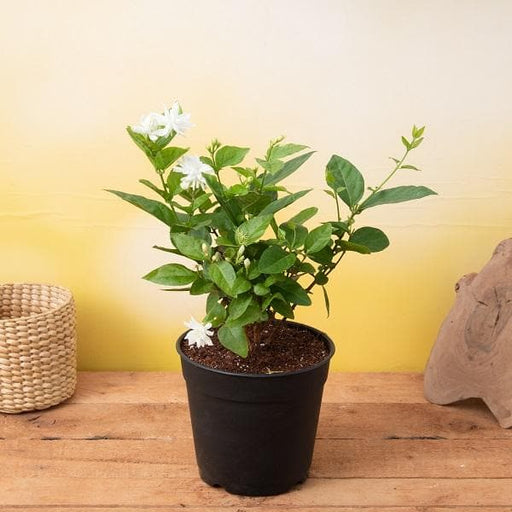
 Save 17%
Save 17%
Beautiful Fragrant Mogra, Arabian Jasmine Plant with Pot The Beautiful Fragrant Mogra, also known as Arabian Jasmine (Jasminum sambac), is...
View full details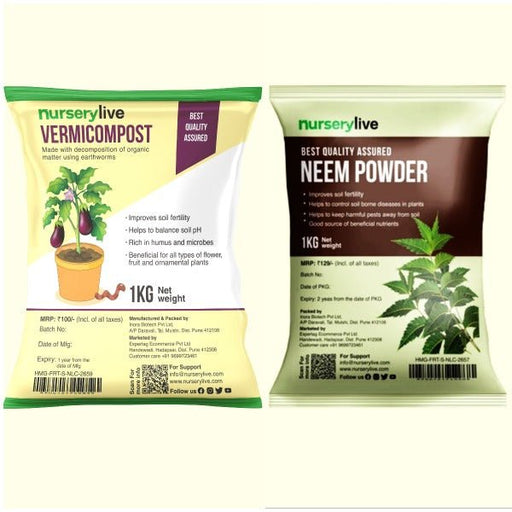 Save 15%
Save 15%
Pack of Vermicompost and Neem Cake for House Plants Transform your indoor garden with our premium Pack of Vermicompost and Neem Cake, spec...
View full details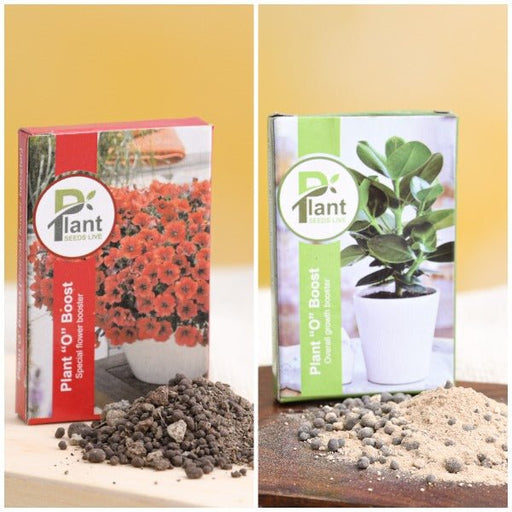
Pack of Plant Growth and Flower Boosters Unlock the full potential of your garden with our Pack of Plant Growth and Flower Boosters! This ...
View full details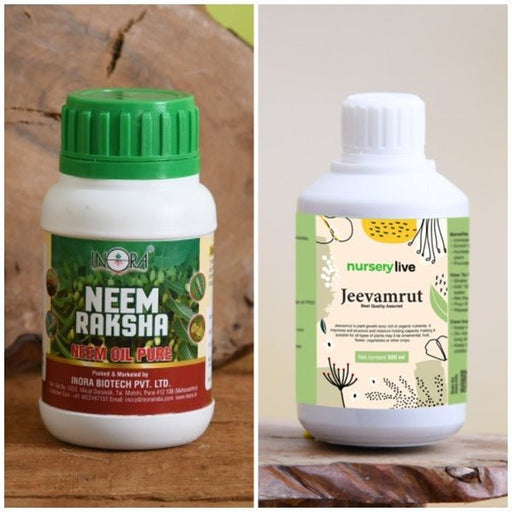 Save 38%
Save 38%
Combo of Jeevamrut and Neem Raksha for Easy Growth and Protection of Houseplants Transform your indoor garden with our exclusive combo of ...
View full details Save 22%
Save 22%
Plant Nutrients Kit (Pack of 16) for a Healthy Garden Transform your garden into a lush paradise with our Plant Nutrients Kit, featuring 1...
View full details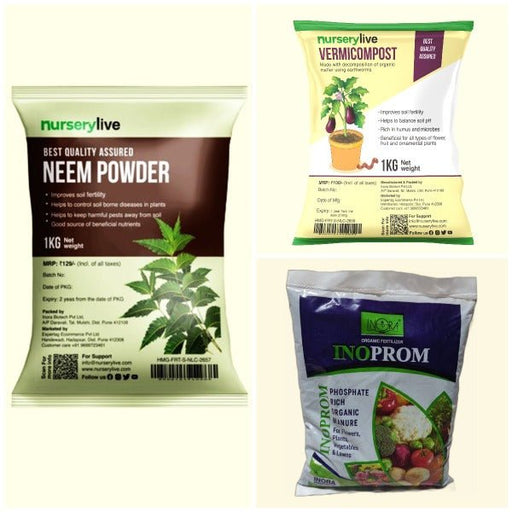 Save 16%
Save 16%
Combo of Top Plant Fertilizers Elevate your gardening game with our exclusive Combo of Top Plant Fertilizers, featuring two bags of premiu...
View full details Save 24%
Save 24%
Pack of 4 Additives to Make Soil Healthy and Nutrient Rich Transform your garden into a thriving ecosystem with our Pack of 4 Additives de...
View full details Save 30%
Save 30%
Transform your gardening experience with our premium Combo of Perlite and Vermiculite. This unique blend is designed to enhance soil aeration and ...
View full details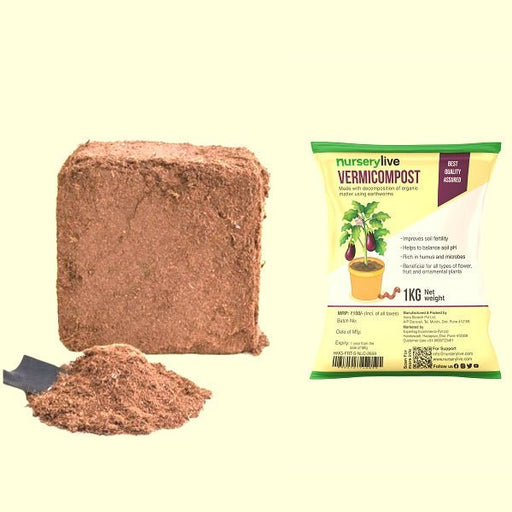 Save 27%
Save 27%
Combo of 2 Vermicompost and Cocopeat - Enrich Your Soil Naturally! Transform your garden into a thriving ecosystem with our Combo of 2 Ver...
View full details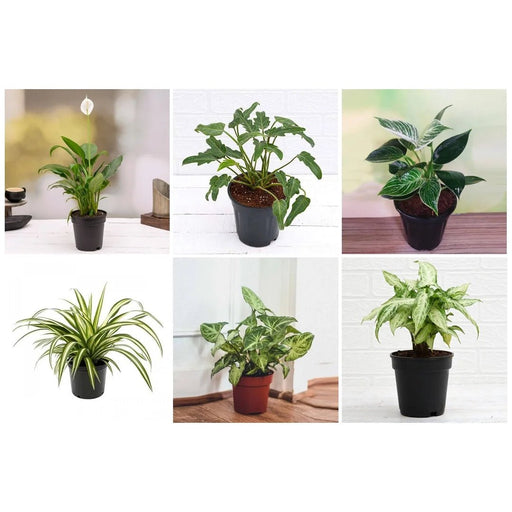
 Save 35%
Save 35%
Best 6 Plants for Perfect Indoor Garden Transform your living space into a lush oasis with our curated collection of the Best 6 Plants for a...
View full details
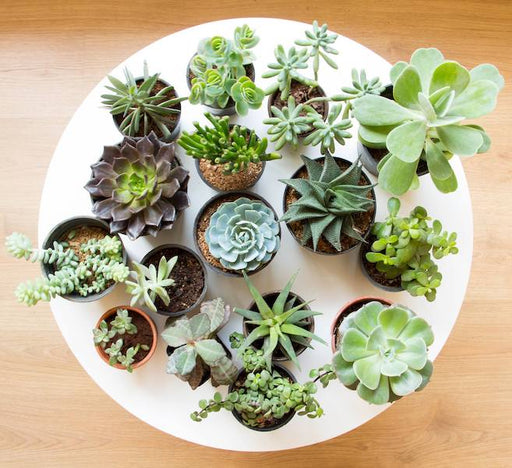 Save up to 50%
Save up to 50%
Mini Succulent Garden Pack Transform your space with our Mini Succulent Garden Pack, featuring a delightful collection of 4 any variety beautiful s...
View full details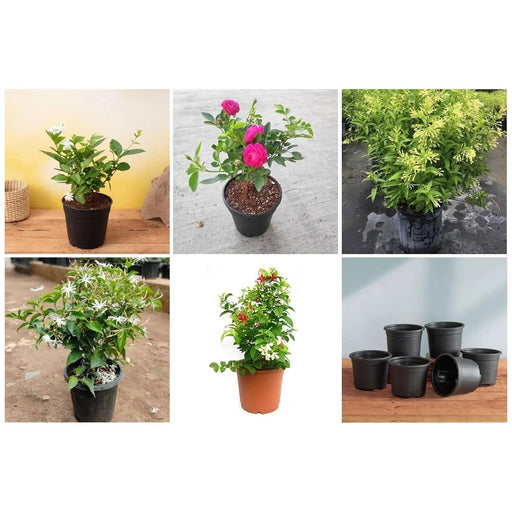
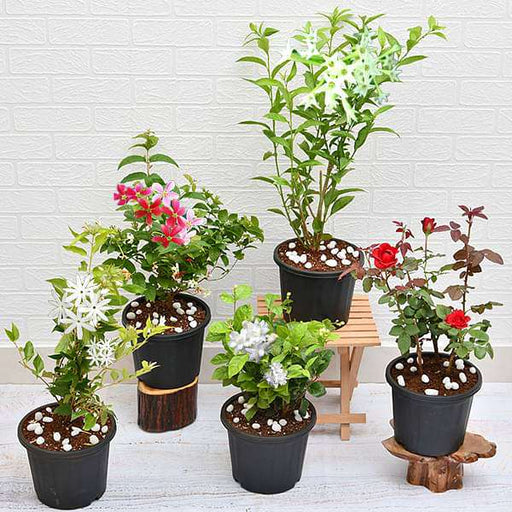 Save 30%
Save 30%
5 Best Fragrant Plants Transform your garden or indoor space into a fragrant paradise with our curated selection of the 5 Best Fragrant Plants. Th...
View full details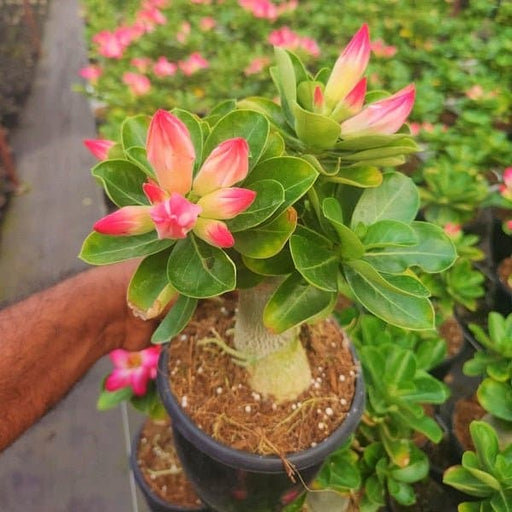
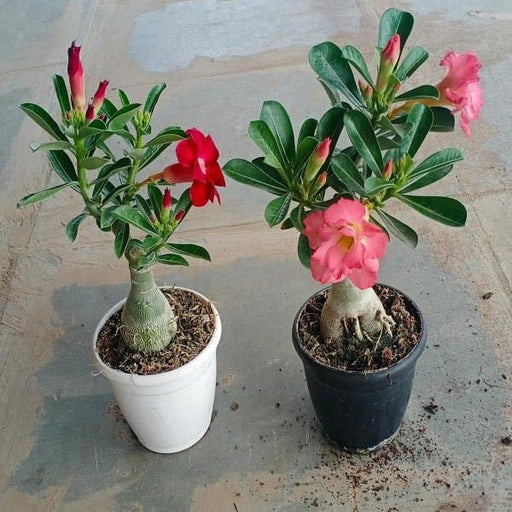 Save 24%
Save 24%
Set of 2 Bonsai Looking Grafted Adeniums Transform your indoor or outdoor space with our exquisite Set of 2 Bonsai Looking Grafted Adenium...
View full details Save 45%
Save 45%
Top 4 Die Hard Succulents Pack Transform your indoor or outdoor space with our Top 4 Die Hard Succulents Pack, featuring a curated selecti...
View full details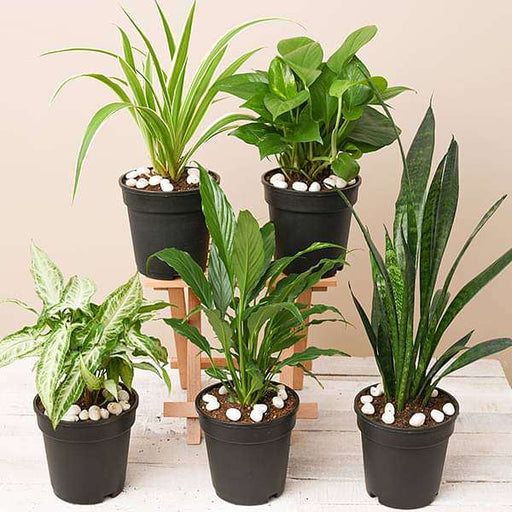
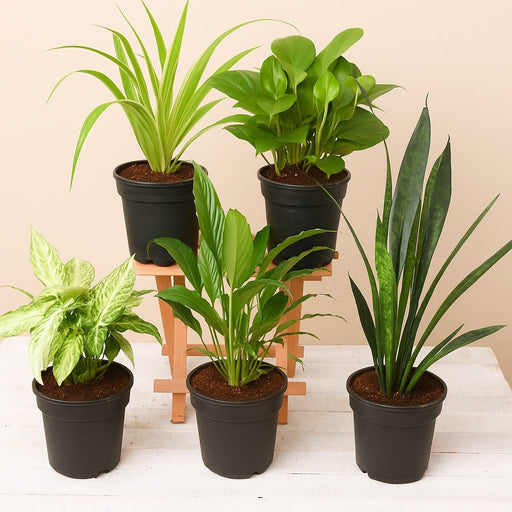 Save 30%
Save 30%
5 Best Indoor Plants Pack Transform your living space into a lush oasis with our '5 Best Indoor Plants Pack.' This carefully curated collection fe...
View full details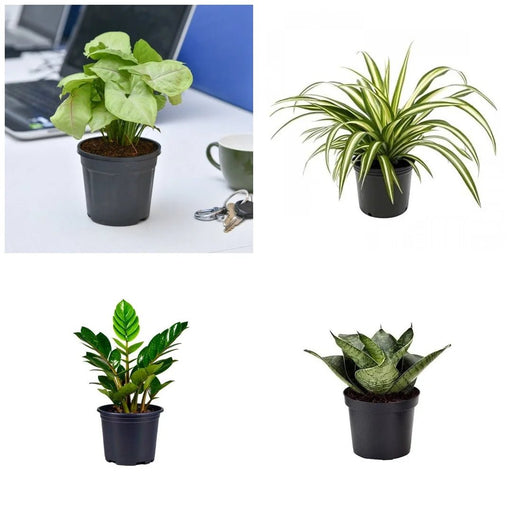
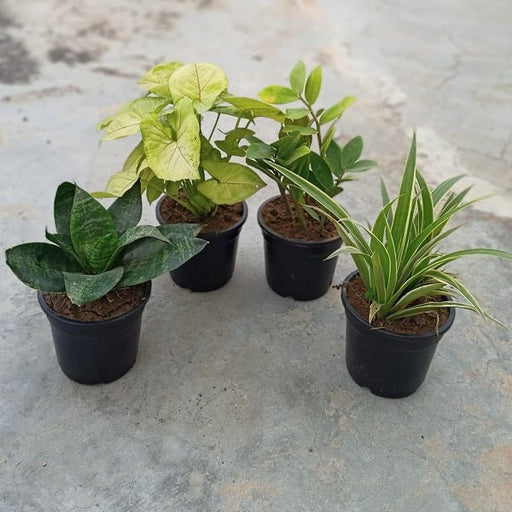 Save 25%
Save 25%
Set of 4 Evergreen Air Purifier Plant Pack Transform your indoor space into a lush, green oasis with our Set of 4 Evergreen Air Purifier Pla...
View full details| SrNo | Item Name |
|---|---|
| 1 | Bleeding Heart Plant, Lamprocapnos spectabilis - Plant |
The Bleeding Heart Plant, scientifically known as Lamprocapnos spectabilis, is a perennial favorite among gardeners, renowned for its stunning heart-shaped flowers that dangle gracefully from arching stems. Blooming in shades of pink and white, this plant adds a touch of whimsy and romance to any garden. Native to Asia, it thrives in shaded areas, making it an ideal choice for woodland gardens or shaded borders.
What makes the Bleeding Heart special is its unique flower structure, resembling delicate hearts that seem to "bleed" from the bottom. This captivating appearance has made it a symbol of love and compassion in various cultures. Additionally, its lush green foliage provides a beautiful backdrop, enhancing the overall aesthetic of your garden.
One of the special features of the Bleeding Heart Plant is its ability to attract pollinators such as bees and butterflies, contributing positively to the ecosystem. Its early spring blooms herald the arrival of warmer weather, making it a delightful addition to any landscape.
If you think caring for a Bleeding Heart Plant is like a walk in the park, think again! These beauties are a bit high-maintenance, requiring well-drained soil and partial shade to thrive. They’re like the divas of the garden, demanding just the right amount of water and attention. But fear not! With a little TLC, they’ll reward you with stunning heart-shaped flowers that will make your neighbors green with envy. Just remember, overwatering is a no-no; they prefer to sip rather than guzzle!
Who knew that a plant could be a multitasker? The Bleeding Heart Plant not only adds a whimsical touch to your garden but also attracts pollinators like bees and butterflies. It’s like hosting a garden party where the guests are nature’s finest! Plus, its unique flowers can be a conversation starter, making you the talk of the town. And let’s not forget, it’s a perennial, so it’ll keep coming back year after year, like that friend who never leaves the party!
Ah, the scientific name that sounds like a spell from a wizarding world! Lamprocapnos spectabilis is the official title of the Bleeding Heart Plant, and it’s as enchanting as it sounds. Originating from Asia, this plant has captured hearts (pun intended) with its drooping, heart-shaped flowers. It’s a perennial superstar, blooming in spring and adding a splash of color to your garden. Just don’t ask it to perform magic tricks; it’s more of a show-off than a magician!
Variety is the spice of life, and the Bleeding Heart Plant is no exception! From the classic pink to the rare white variety, there’s a Bleeding Heart for every garden aesthetic. Each type has its own charm, like a family of quirky relatives at a reunion. Some even have unique foliage that adds an extra layer of interest. So, whether you’re going for a romantic vibe or a more modern look, there’s a Bleeding Heart variety that will fit right in!
Want to expand your garden without breaking the bank? Propagating Bleeding Heart Plants is like cloning your favorite celebrity—easy and rewarding! You can do it through division or seeds, and soon you’ll have a mini Bleeding Heart army. Just remember to give them enough space to grow; they don’t like to be crowded, much like your introverted friend at a party. With a little patience, you’ll have a flourishing garden that’s the envy of all!
Every garden has its villains, and the Bleeding Heart Plant is no exception. Watch out for pesky pests like aphids and slugs that think your plant is their personal buffet. But fear not! A little neem oil or insecticidal soap can send these intruders packing. Think of it as your plant’s superhero cape, swooping in to save the day. Keep an eye out, and your Bleeding Heart will remain the belle of the ball!
While the Bleeding Heart Plant is a showstopper in the garden, it’s not exactly a snack for pets or humans. Its beautiful flowers contain compounds that can be toxic if ingested. So, if you have curious pets or children, it’s best to keep this beauty out of reach. Think of it as the glamorous but slightly dangerous friend who’s fun to have around but not someone you’d want to share a meal with!
Looking to add a touch of romance to your landscape? The Bleeding Heart Plant is your go-to! With its delicate flowers and lush foliage, it’s perfect for borders, shaded areas, or even as a focal point in a woodland garden. It’s like the charming lead in a romantic comedy, effortlessly drawing attention and admiration. Just plant it where it can shine, and watch as it transforms your outdoor space into a dreamy retreat.
Every star needs a supporting cast, and the Bleeding Heart Plant is no different! Pair it with ferns, hostas, or astilbes for a stunning garden ensemble. These companions not only complement its beauty but also thrive in similar conditions, creating a harmonious garden vibe. It’s like assembling the ultimate garden squad—each plant bringing its unique flair to the party. Together, they’ll create a lush, inviting space that’s sure to impress!
Spring is the time to shine for the Bleeding Heart Plant, as it bursts into bloom with heart-shaped flowers that steal the show. This is when it truly lives up to its name, creating a stunning display that can make even the grumpiest gardener smile. The blooms typically last for several weeks, so make sure to have your camera ready! Just like a pop star on stage, it knows how to make an entrance and leave everyone wanting more.
If you want your Bleeding Heart Plant to thrive, you better pay attention to its soil preferences! This plant loves rich, well-drained soil that’s slightly acidic. Think of it as a high-maintenance diva who only wants the best. Adding organic matter like compost can help create the perfect environment for it to flourish. So, roll up your sleeves and get your hands dirty; your Bleeding Heart will thank you with a spectacular show of blooms!
The Bleeding Heart Plant, scientifically known as Lamprocapnos spectabilis, is a perennial beauty that flaunts heart-shaped flowers. These charming blooms dangle like little pendants, making it a favorite among garden romantics. It’s like nature’s way of saying, “I love you” without the awkwardness of a first date.
Caring for your Bleeding Heart Plant is as easy as pie—if pie were a delicate flower! It loves partial shade and moist, well-drained soil. Just remember to water it regularly, and it’ll reward you with stunning blooms. Think of it as a high-maintenance friend who only asks for a little TLC.
The Bleeding Heart Plant typically blooms in spring, around April to June, just in time for those romantic garden picnics. Its heart-shaped flowers will steal the show, making your garden the talk of the town. Just be ready to fend off admirers who want to know your secret!
Absolutely! Bleeding Heart Plants can thrive in pots, making them perfect for those with limited garden space. Just ensure the pot has good drainage and provide it with some shade. It’s like giving your plant a cozy apartment—just don’t forget to water it!
Yes, the Bleeding Heart Plant is toxic to pets, so keep your furry friends at bay. If they decide to munch on those lovely blooms, it could lead to some serious tummy troubles. Think of it as a “do not enter” sign for your pets—better safe than sorry!
Propagating Bleeding Heart Plants is like matchmaking for plants! You can do it through division in early spring or fall. Just dig up the plant, separate the roots, and replant them. With a little patience, you’ll have a whole new batch of heart-shaped beauties to admire.
Bleeding Heart Plants prefer rich, well-draining soil that’s slightly acidic to neutral. Think of it as a five-star hotel for roots—luxurious and comfy! Adding organic matter like compost can help create the perfect environment. Your plant will thank you with a stunning display of blooms!
Bleeding Heart Plants thrive in partial shade, so think of them as the introverts of the plant world. They enjoy dappled sunlight but can’t handle the harsh midday rays. Too much sun, and they might just wilt away, dreaming of cooler, shadier spots.
While Bleeding Heart Plants can tolerate some sun, full sun is like a bad blind date—awkward and uncomfortable! Too much direct sunlight can scorch their delicate leaves. If you want them to thrive, give them a cozy spot with some shade to keep them happy.
Pests can be a real buzzkill for your Bleeding Heart Plant. Keep an eye out for aphids and slugs, and if they crash the party, use insecticidal soap or neem oil. It’s like calling in the bouncers to keep your plant’s vibe peaceful and pest-free!
The best time to plant Bleeding Heart Plants is in early spring or fall. This timing allows them to establish roots before the heat of summer or the chill of winter. It’s like giving them a head start in the race to bloom beautifully!
Yes, Bleeding Heart Plants benefit from division every few years. This helps prevent overcrowding and keeps them healthy and vibrant. Think of it as giving your plant a little personal space—everyone needs a breather now and then! Just be sure to replant the divisions promptly.